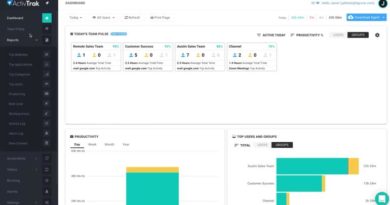How Veterans Can Take Charge Of Their Finances
When you’re a member of the armed forces, life can be pretty formulaic. Career paths and decisions, duties, and responsibilities are often predictable.
Once a service member is honorably discharged and transforms into a veteran, though, it’s up to them to maintain the momentum — including with their finances. This can feel intimidating at first, but there are several steps that a vet can take in order to recapture that energy.
If you’re a vet, use the tips below to take charge of your finances and set yourself up for a comfortable future.
1. Start With the Basics
Before you get too complicated, make sure you have the basic elements in place. This starts with a budget.
If you haven’t reworked your budget recently (or you don’t have one in the first place) take some time to do that now.
Start with income. In the past, you could use something like a military pay calculator to get a solid idea of what your income would be. As a vet, you may have a less predictable timeline for your income. All the same, do your best to create a conservative estimate of what your income will be moving forward.
Once you know your income, you can create a budget. List out your expenses and make sure that you’re living within your means and are paying down debt on a regular basis.
2. Check Your Credit
As a vet, you have access to things like VA loans. Even so, it’s a good idea to check the condition of your credit.
Start by checking your credit score. A good score is typically anything over 670.
If you’re below that point, you should make a plan to improve your credit. You can do this in many different ways, such as paying down credit and making sure you don’t miss any payments.
It’s also a good idea to review your credit reports for any errors. Get a free copy of your reports from the three credit bureaus and then give them a once over. If you find any errors, you can dispute them by contacting the bureaus.
3. Reduce Expenses and Attack Debt
Next up, look for ways to reduce your expenses. This is a great exercise to plan on every few months.
You can cut savings in countless different ways. For instance, review your streaming subscriptions and see if you can reduce them to one or two at a time.
You can also adopt the “30-Day Rule.” All it requires is deferring any non-essential purchases for 30 days to see if an item or service is really something you want to buy.
As you free up cash, look for ways to redirect it toward things like debt and savings.
4. Plan for the Short- and Long-Term
As you regain control of your finances, make sure to plan for both the short and the long term.
For instance, as you break down your budget and cut expenses, consider setting up a rainy day fund. Ideally, a fund like this should be at least three months of living expenses, so it can take some time.
You can also direct some of your extra funds toward long-term savings. The most obvious candidate here is retirement, but you can also set other goals. Does your child need to go to college? Do you want to pay off certain debts?
Keeping your short- and long-term financial health in mind at the same time is always a good idea.
5. Use the Veteran-Specific Resources Available
Finally, take the time to familiarize yourself with the different veteran-specific financial resources available.
There are a lot of options out there, and each one serves a different purpose. From emergency assistance to personal fundraising to debt management support, it never hurts to stay up-to-date on the financial resources you can tap as a veteran.
It can be hard recapturing the momentum of your personal finances as a veteran. The good news is that you’re not alone. There are thousands of vets just like you trying to take charge — many with tremendous success.
Use the tips above to realign yourself and establish a financial strategy. Then apply yourself with grit and determination, and before long, you’ll start to see the results.



